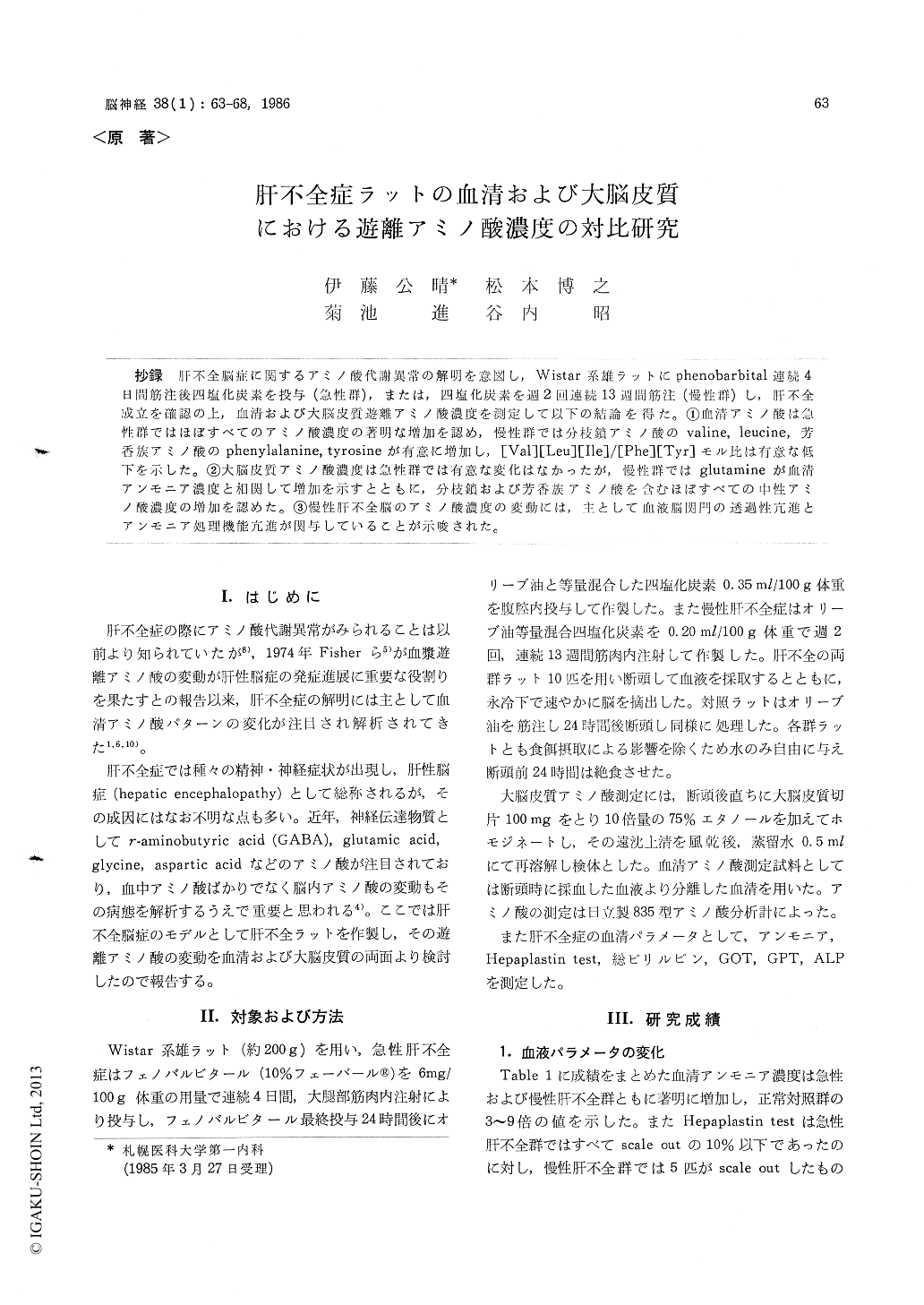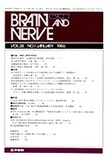Japanese
English
- 有料閲覧
- Abstract 文献概要
- 1ページ目 Look Inside
抄録 肝不全脳症に関するアミノ酸代謝異常の解明を意図し,Wistar系雄ラットにphenobarbital連続4日間筋注後四塩化炭素を投与(急性群),または,四塩化炭素を週2回連続13週間筋注(慢性群)し,肝不全成立を確認の上,血清および大脳皮質遊離アミノ酸濃度を測定して以下の結論を得た。①血清アミノ酸は急性群ではほぼすべてのアミノ酸濃度の著明な増加を認め,慢性群では分枝鎖アミノ酸のvaline, leucine,芳香族アミノ酸のphenylalanine, tyrosineが有意に増加し,[Val][Leu][Ile]/[Phe][Tyr]モル比は有意な低下を示した。②大脳皮質アミノ酸濃度は急性群では有意な変化はなかったが,慢性群ではglutamineが血清アンモニア濃度と相関して増加を示すとともに,分枝鎖および芳香族アミノ酸を含むほぼすべての中性アミノ酸濃度の増加を認めた。③慢性肝不全脳のアミノ酸濃度の変動には,主として血液脳関門の透過性亢進とアンモニア処理機能亢進が関与していることが示唆された。
In order to elucidate the role of amino acidchanges in hepatic encephalopathy, free amino acids in serum and cerebral cortex were measured in the experimental hepatic failure models. The acute and chronic models were pcoduced in adult male Wistar rats by carbontetrachloride (CCl4) administration. Acute model was produced by a single intraperitoneal injection of CCl4 (0.35 ml/ 100 g, B. W.) after the daily pretreatment of phe-nobarbital (6 mg/100 g, B. W.) for 4 days, while chronic model was established by succesive injec-tions CCl4 (0.20 ml/100 g, B. W., twice/week) for 13 weeks. They were confirmed to develop chemical changes compatible with hepatic failure, showing markedly elevated serum levels of NH3, GOT and ALP. Animals were killed by decapitation during fasting and the brains were removed immediately. The parietal cortexes were homogenized in 75% ethanol and deproteinized with water saturated chloroform. The supernatants were subjected to amino acid analyzer.
In serum, almost all amino acid concentrations were elevated in acute hepatic failure, reflecting massive release of amino acids from severely damaged liver cells. Chronic hepatic failure rats,however, showed moderately elevated levels of valine and leucine and markedly high levels of phenylalanine and tyrosine, which eventually led to a reduction of the ratio of branched chain amino acids to aromatic amino acids. Regarding urea cycle related amino acids, there were decreases of aspartate and arginine and an increase of ornithine, while citrulline was not affected.
In cerebral cortex, no different pattern was observed in acute hepatic failure with the excep-tion of increases in threonine, glycine and leucine. On the contrary, almost all neutral amino acids were increased in chronic hepatic failure, in which there was a correlation between the cerebral glu-tamine level and serum ammonia level.
When the above results are taken together, the complicated mechanism of cerebral amino acid changes could be explained by the hypothesis that brains exposed to chronic hepatic failure could develop an alteration in the blood brain barrier and a concomitant enhancement of ammonia fix-ation.

Copyright © 1986, Igaku-Shoin Ltd. All rights reserved.


